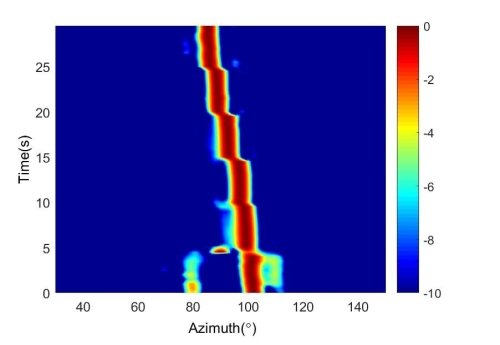Recently, researchers in Shanghai Institute of Optics and Fine Mechanics (SIOM), Chinese Academy of Sciences (CAS) in cooperation with the 23rd Institute of China Electronics Technology Group Corporation, have demonstrated a distributed optical fiber hydrophone based on Φ-OTDR and its field test. The results were published on Optics Express on Feb. 1, 2021.
Due to the advantages, such as anti-electromagnetic interference, light weight, no electricity devices under water, and so on, optical fiber hydrophone has played an important role in marine mineral resources exploration. However, the most used optical fiber hydrophone based on interferometer structure is a kind of point senor, and the hydrophone needs to work in the form of an array through different multiplexing methods, which makes the whole system structure complex, the array volume large and expensive.
In addition, the array element spacing is fixed and lacks the flexibility to satisfy the different frequency detection need in the field of marine acoustic detection.
In this study, researchers proposed a new kind of distributed optical fiber hydrophone based on Φ-OTDR. A new type of sensitized optical cable is introduced. The sensitized optical cable consists of a supporting mandrel, special optical fiber, and cable sheath. The sensitivity of the cable can reach about -146dB rad/μPa/m, which is much higher than traditional optical cable. An array signal processing model for DOFH is constructed, to analyze the equivalence and specificity of acoustic wave response using the Φ-OTDR as a distributed array of acoustic sensors. In the field test, a Φ-OTDR system based on heterodyne coherent detection (Het Φ-OTDR) is utilized, the 104-meter-long optical cable is deployed in the lake. Through array signal processing, underwater acoustic signal source signal orientation and motion trajectory tracking can be realized accurately.
This work was supported by National Key Research and Development Program of China, National Natural Science Foundation of China, and Science and Technology Commission of Shanghai Municipality.

Fig. The motion trajectory tracking of the sound source. (Image by SIOM)
Article website:
https://doi.org/10.1364/OE.414598
Contact:
WU Xiufeng
General Administrative Office
Shanghai Institute of Optics and Fine Mechanics, CAS
Email: xfwu@siom.ac.cn
Web: http://english.siom.cas.cn/